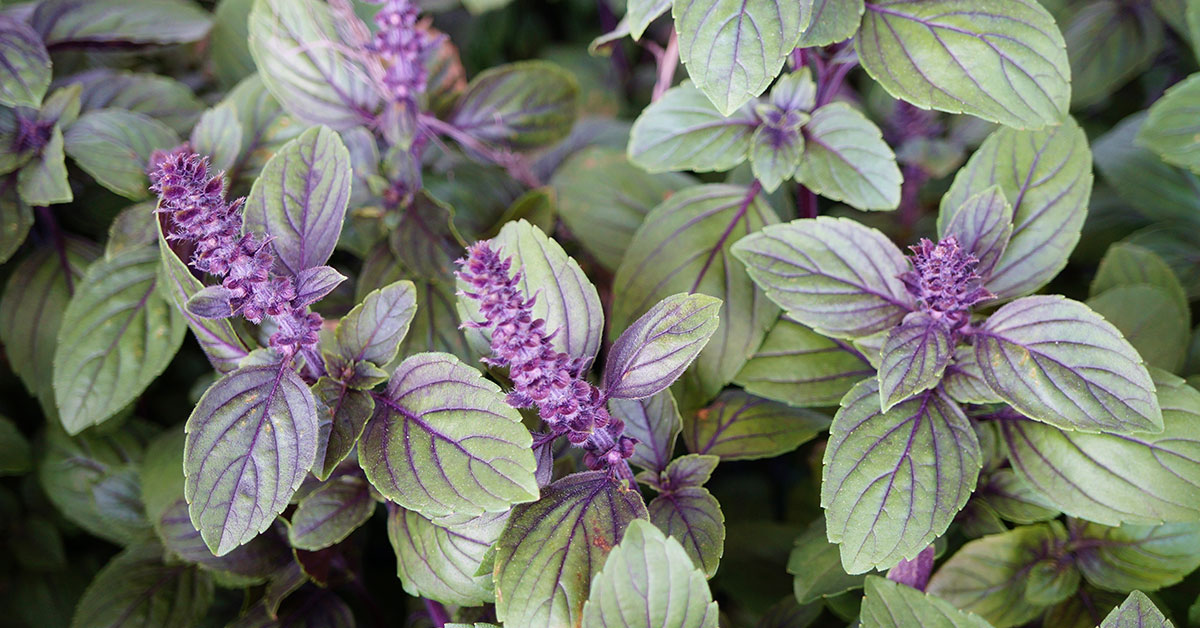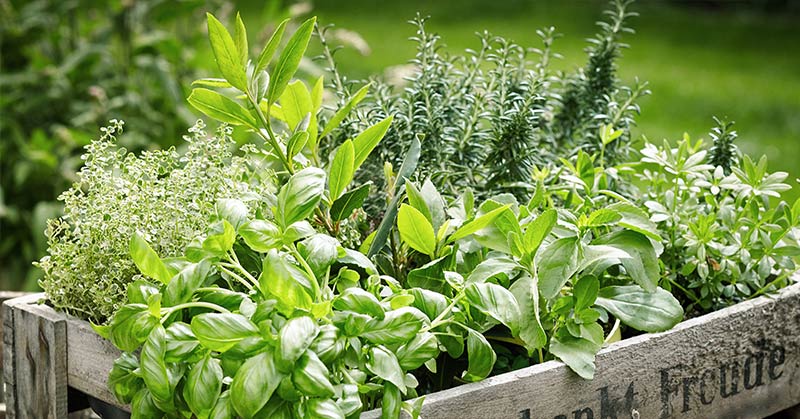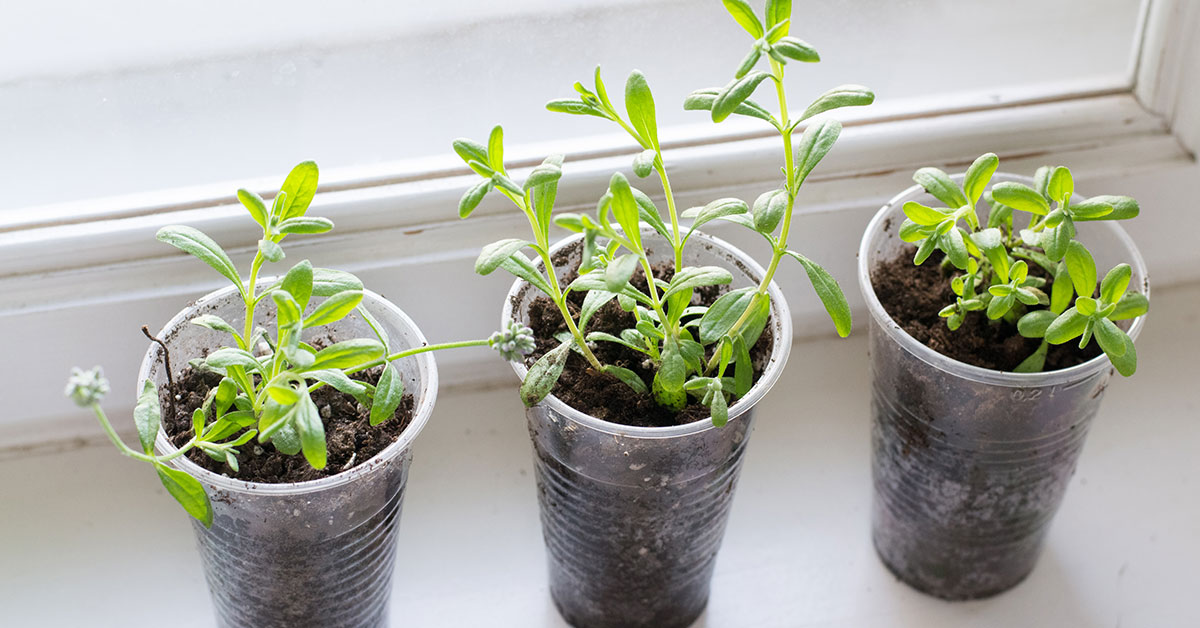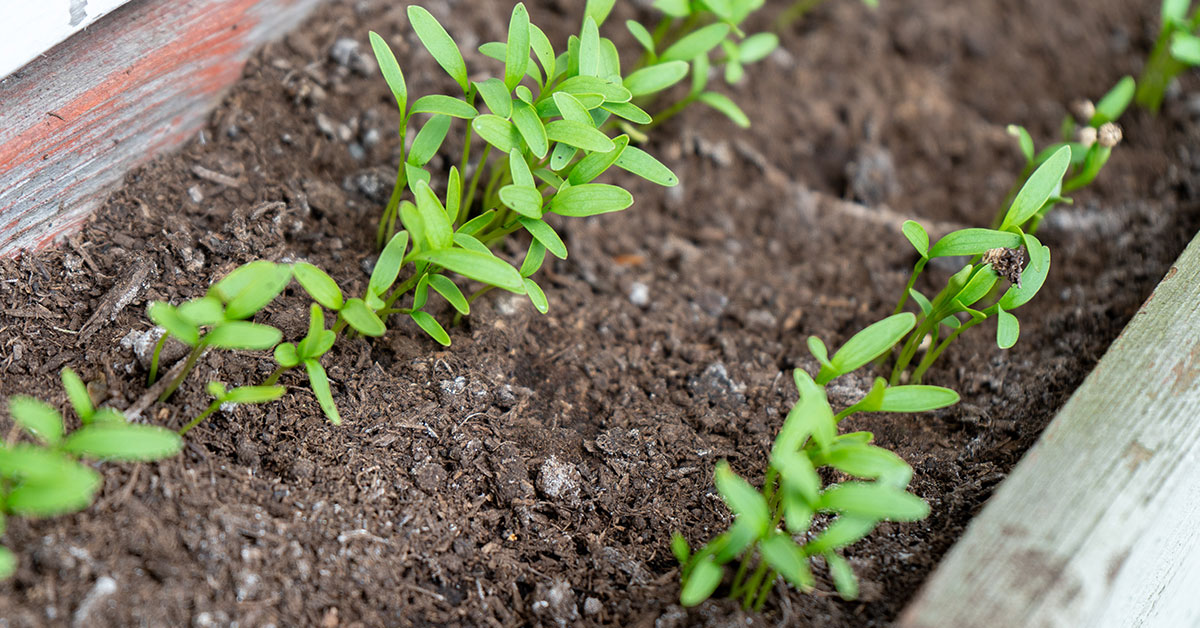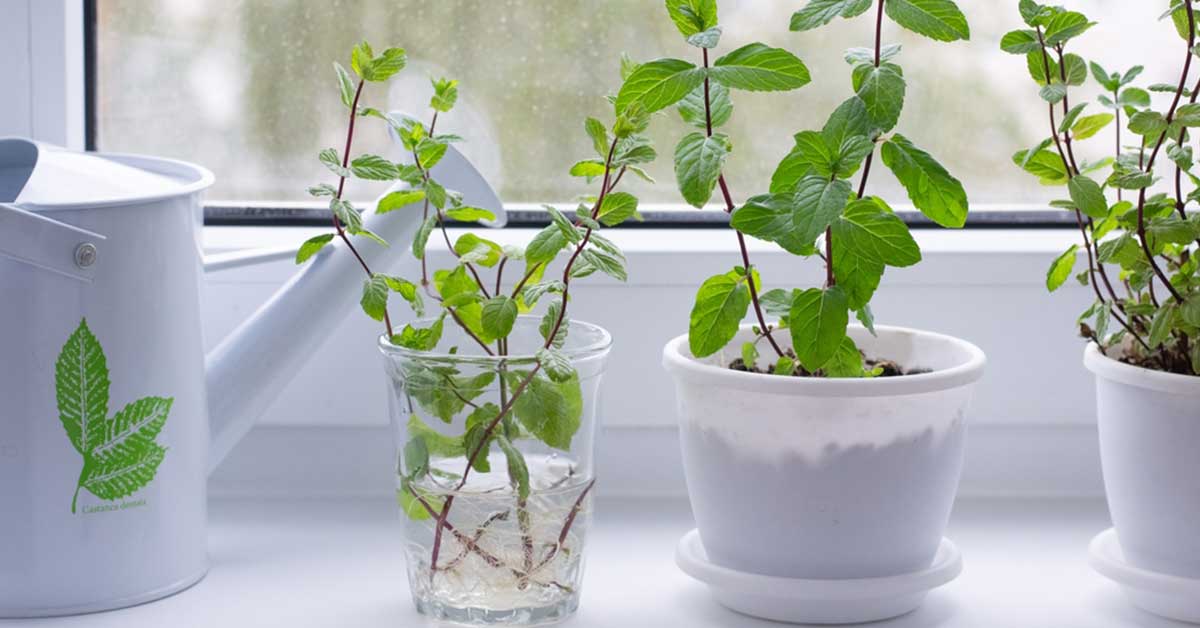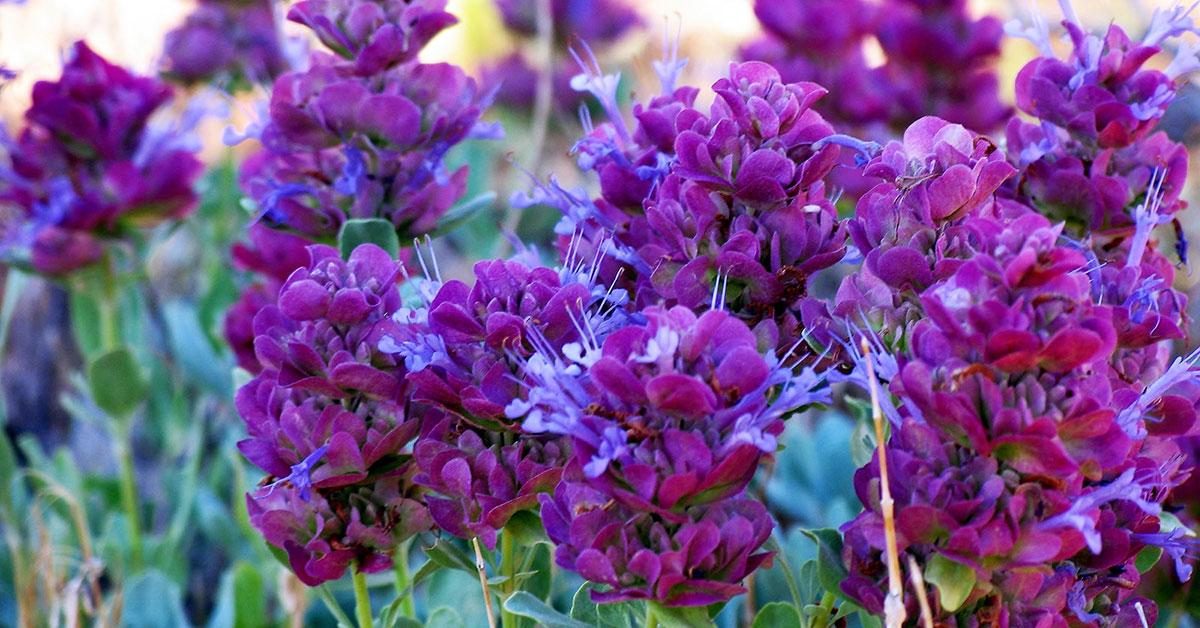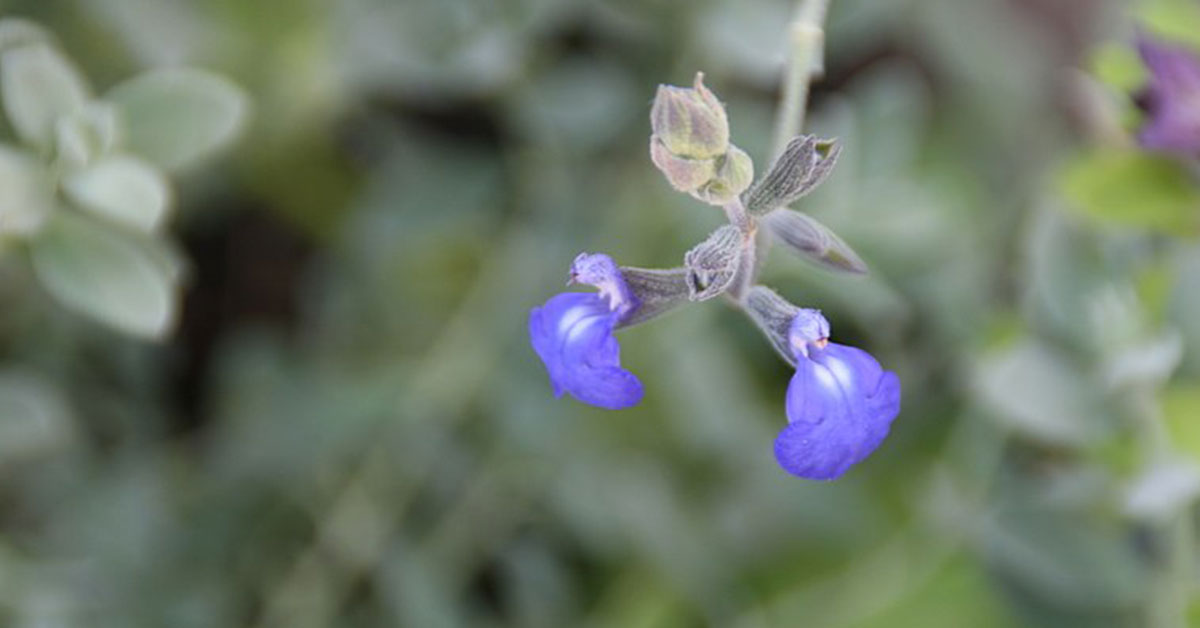Growing African blue basil (Ocimum kilimandscharicum × basilicum ‘Dark Opal’) can be a rewarding experience for gardeners looking to add a unique and visually striking herb to their gardens. This herb is best grown in warm and frost-free climates, typically suited for USDA hardiness zones 9-11. It requires a location with full sun or partial shade and well-draining soil. In this article, we’ll take a deep dive into all things African Blue Basil!
What is African Blue Basil?
African blue basil (Ocimum kilimandscharicum × basilicum ‘Dark Opal’) is a unique and visually striking cultivar of basil. It is a hybrid variety that resulted from a cross between two basil species: Ocimum kilimandscharicum (Camphor basil) and Ocimum basilicum (Sweet basil).
This herb is known for its ornamental appeal, featuring beautiful purple-tinged leaves with a glossy appearance. The leaves are larger and more elongated compared to traditional sweet basil varieties. The plant itself can grow up to 2-3 feet tall, creating an impressive presence in the garden.
While African blue basil is primarily grown for its attractive foliage, it also produces small, delicate lavender-pink flowers that attract pollinators like bees and butterflies. The flowers add an additional touch of beauty to the plant.
Flavor and uses
In terms of aroma and flavor, African blue basil offers a slightly milder and more subtle taste compared to traditional sweet basil. It has a pleasant basil scent with hints of camphor and mint. While it is suitable for culinary use, its flavor profile may be less intense than other basil varieties.
Beyond its aesthetic appeal, this herb is also known for its potential medicinal properties. It contains higher levels of rosmarinic acid and other compounds, which are believed to have antioxidant and anti-inflammatory effects.
Whether grown for its striking appearance, its mild flavor, or its potential health benefits, it is a captivating and unique addition to herb gardens and landscapes.
Where does African Blue Basil grow?
African blue basil is not a naturally occurring plant in the wild, so it does not have a specific native region. It is a hybrid variety that was developed through selective breeding and cross-pollination of different basil species.
In terms of hardiness zones, this herb is generally grown as an annual or tender perennial. It is best suited for USDA hardiness zones 9-11, where the climate is warm and frost-free. In these zones, African blue basil can thrive and potentially behave as a perennial, coming back year after year.
In colder regions with harsh winters, this herb is typically treated as an annual. Gardeners in these areas can enjoy its beauty and culinary uses during the warmer months by planting it as a seasonal herb and starting fresh each year. Alternatively, it can be grown in containers and brought indoors during colder seasons to protect it from frost.
How to grow African Blue Basil
Growing African blue basil (Ocimum kilimandscharicum × basilicum ‘Dark Opal’) requires attention to its specific growing conditions. Here’s a step-by-step guide on how to successfully cultivate this herb:
- Location: Choose a sunny spot in your garden that receives at least 6-8 hours of direct sunlight per day. African blue basil can tolerate partial shade but performs best in full sun.
- Soil Preparation: Prepare well-draining soil enriched with organic matter. It prefers a slightly acidic to neutral pH level (around 6.0-7.0). Amend the soil with compost or well-rotted manure to improve its fertility and drainage.
- Planting: Start seeds indoors 6-8 weeks before the last expected frost date or sow them directly into the garden after the danger of frost has passed. Plant the seeds 1/4 to 1/2 inch deep and cover them lightly with soil. Space the plants 12-18 inches apart to allow for proper airflow and growth.
- Watering: Keep the soil evenly moist but not waterlogged. Water deeply whenever the top inch of soil feels dry. Avoid overwatering, as excessive moisture can lead to root rot.
- Mulching: Apply a layer of organic mulch around the base of the plants to help retain soil moisture, suppress weed growth, and maintain a consistent soil temperature.
- Pruning and Pinching: Regularly prune or pinch back the stems of African blue basil to encourage branching and bushier growth. This helps create a more compact and attractive plant.
- Fertilization: This herb typically does not require heavy feeding. However, you can apply a balanced organic fertilizer once or twice during the growing season to provide essential nutrients. Follow the package instructions for application rates.
- Harvesting: Once the plant has reached a sufficient size, you can begin harvesting the leaves. Pinch or snip off individual leaves or cut whole stems as needed. Harvesting regularly encourages fresh growth and helps maintain the plant’s shape.
- Overwintering (for colder climates): In regions with frosty winters, African blue basil is typically grown as an annual. However, you can attempt to overwinter it indoors by bringing potted plants inside before the first frost. Place them in a well-lit area, provide moderate watering, and protect them from cold drafts.
By following these guidelines and providing proper care, you can enjoy the beauty and flavor of African blue basil in your garden. Experiment with using its aromatic leaves in culinary creations or simply appreciate its ornamental appeal in your outdoor space.
